Political leaders continue to back the fossil fuel industry even as forests burn, the ocean heats up, permafrost melts, and animals the world over lose their habitats.
It’s easy to become pessimistic, and wonder why the decades ahead would be any different than the dismal track record of the past.
But that outlook unnecessarily accepts the exponential risk of the climate crisis, making it seem like we’re doomed no matter what.
Up to a certain point of warming, humans can adapt to a new normal of limited resources, economic “degrowth,” and environmental rehabilitation. But if greenhouse gas emissions heat the planet further, then the ecological and climate systems that humans have relied on for millennia will unravel, the planet will become hostile, and global inequality would deteriorate to something out of Octavia Butler’s dystopian sci-fi.
That’s why it’s so important to pressure world leaders to keep temperatures from rising more than 1.5 degrees Celsius above pre-industrial levels, as stipulated in the Paris climate agreement.
This is the scenario that the world’s leading scientists, under the auspices of the United Nations’ Intergovernmental Panel on Climate Change, say we have to stay within to remain safe, but even 1.5 degrees entails harsh, new realities.
What’s the Difference Between a Rise of 1.5, 2, and 3 Degrees Celsius?
The world is currently on track to warm more than 3 degrees Celsius, a frightening scenario, unless the global economy is radically transformed. We know how to transform the global economy — phase out fossil fuels and extractive industries and let the planet heal. Now, we have to let scientists and community organizers lead the way toward a just transition.
When the Paris climate agreement was signed in 2015, its architects drew on the most sophisticated science available when warning world leaders not to let temperatures rise more than 1.5 degrees Celsius. Since then, climate data has become even more unequivocal. While a 1 or 2 degrees Celsius rise is meager when it comes to daily temperature changes, the difference becomes catastrophic when scaled to the level of the global climate.
Below, we outline the real-life differences between a global temperature rise of 1.5, 2, and 3 degrees or more Celsius, according to the latest science as reviewed by the nonprofit Carbon Brief.
3 Key Reasons Why Should You Care About Global Warming
- Each additional degree of warming will bring worse climate consequences and will exacerbate existing inequalities.
- The cost of adapting to higher temperature increases will rise exponentially.
- Wildlife that adapted to a stable climate over thousands of years will struggle to survive abrupt temperature increases.
Sea Levels Flooding Coastlines
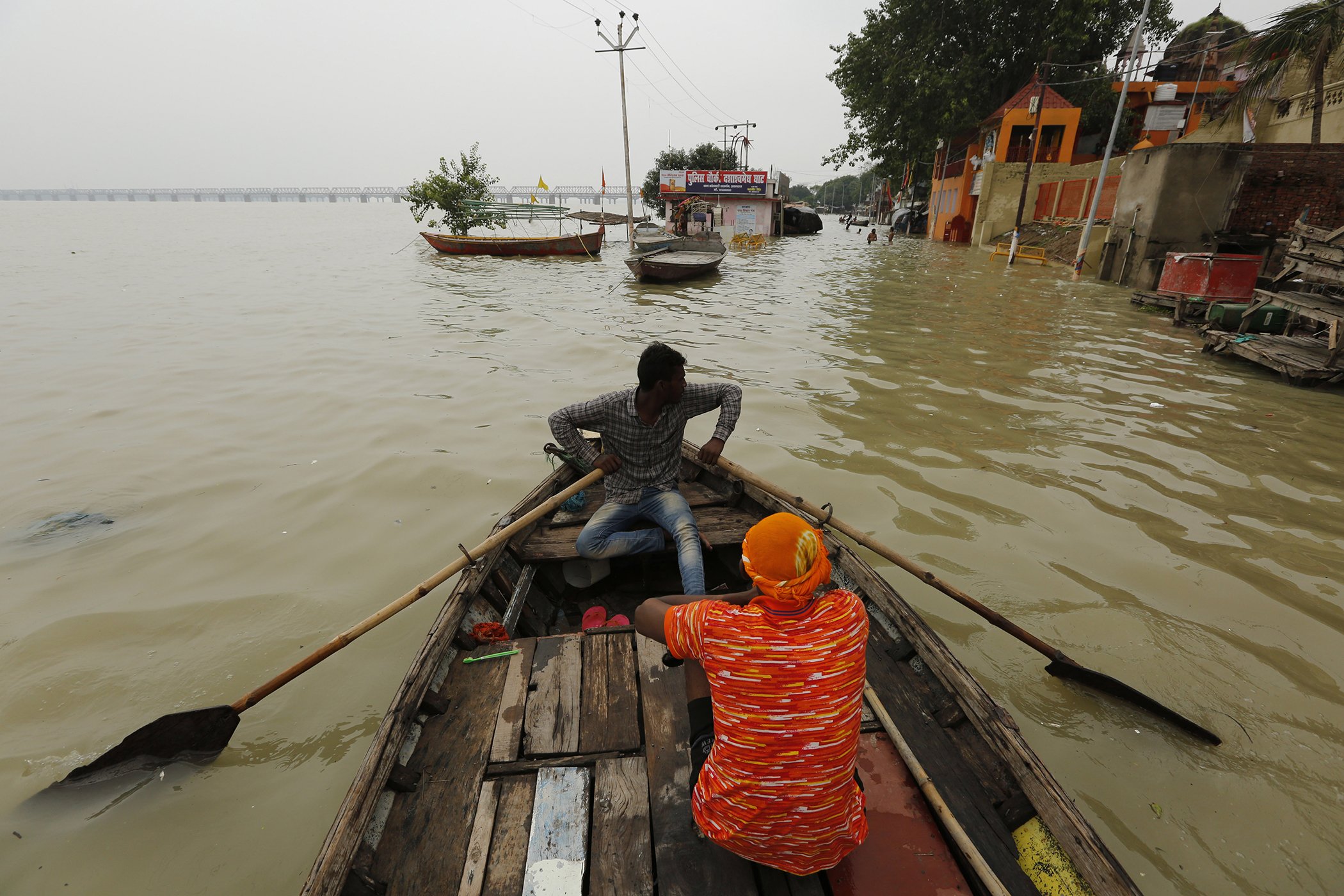 A man rows a boat on the Flooded banks of the River Ganges in Prayagraj, India, Aug. 20, 2019. The water level of the Ganges has risen considerably after heavy rainfall, inundating the banks and low lying areas.
A man rows a boat on the Flooded banks of the River Ganges in Prayagraj, India, Aug. 20, 2019. The water level of the Ganges has risen considerably after heavy rainfall, inundating the banks and low lying areas.
At 1.5 degrees of warming, we can expect 48 centimeters of sea level rise by the end of the century, which is roughly twice as much as current levels. Two degrees of warming would lift sea levels by 56 centimeters. Beyond that, it’s unclear how much sea levels would rise, because feedback loops — a phenomenon that leads to a sort of chain reaction that can make key impacts of climate change stronger — cause global ice melt to accelerate exponentially.
Eight of the world’s 10 largest cities are coastal and would face substantial flooding, erosion, and storm surges under even the mildest scenario. At 3 degrees of warming, however, hundreds of millions of people would be displaced from their homes due to sea level rise. Already, governments are planning to relocate coastal cities at extraordinary expense. Without this kind of planned retreat, sea level rise will greatly exacerbate inequality.
The Ocean Would Become a Hot Soup
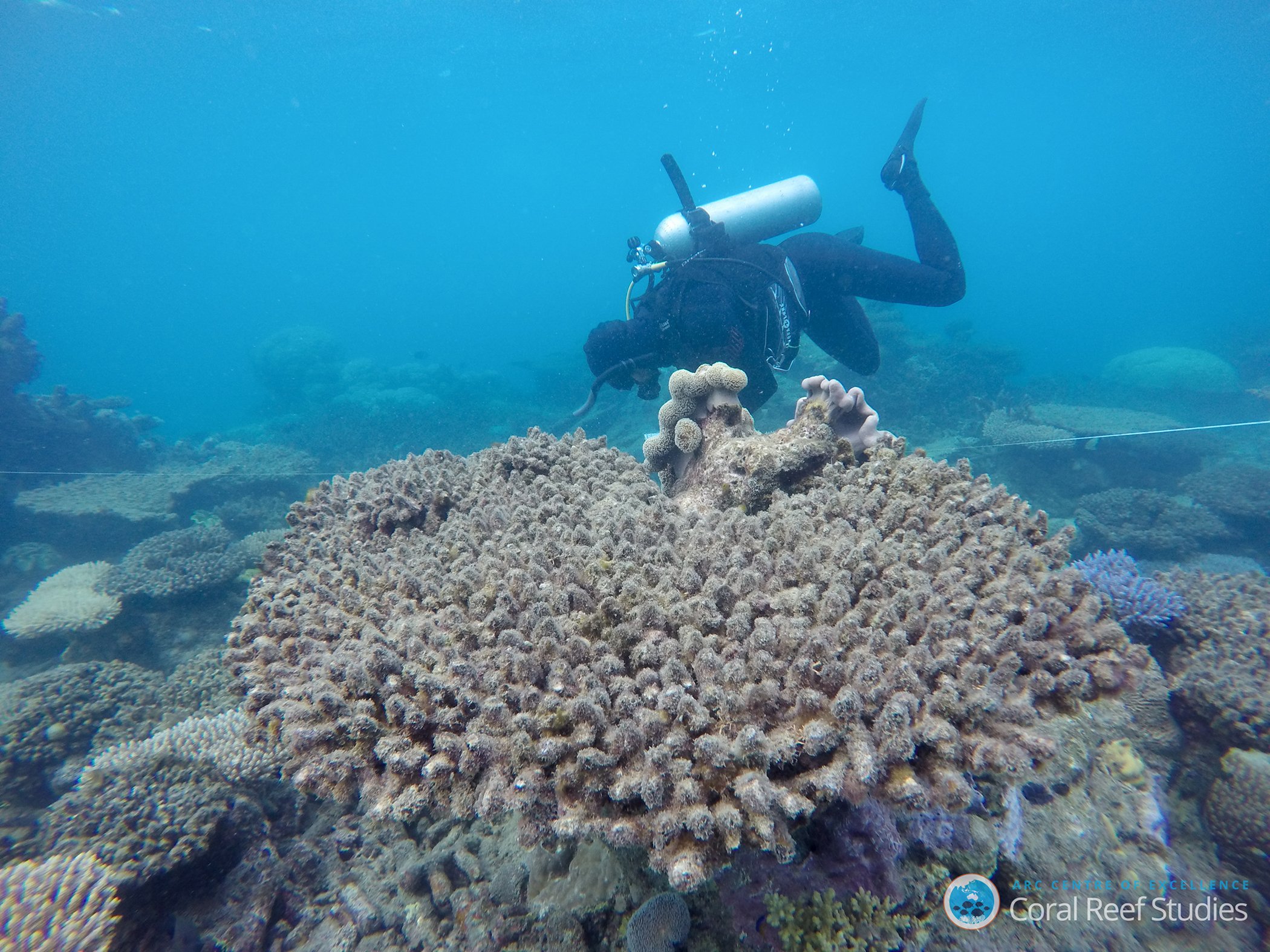 A researcher from the ARC Centre of Excellence for Coral Reef Studies surveys the bleached and dead corals at Zenith Reef, in the northern section of the Great Barrier Reef.
A researcher from the ARC Centre of Excellence for Coral Reef Studies surveys the bleached and dead corals at Zenith Reef, in the northern section of the Great Barrier Reef.
A researcher from the ARC Centre of Excellence for Coral Reef Studies surveys the bleached and dead corals at Zenith Reef, in the northern section of the Great Barrier Reef.
The ocean is absorbing the majority of the excess heat trapped in the atmosphere by greenhouse gases and, as it heats, marine wildlife is being cooked alive.
Marine heat waves, in particular, threaten coral reefs and the plants and animals that depend on them. Since coral reefs support fisheries, rising ocean temperatures threaten a key source of income and food for coastal communities.
The world can expect 16 times more marine heat waves each year at 1.5 degrees of warming, 23 times more heat waves at 2 degrees of warming, and 41 times more at 3.5 degrees of warming.
All of these scenarios would devastate marine life, but every marine heat wave averted helps to protect the plants and animals under the surface of the sea.
Heat Waves Would Become the New Norm
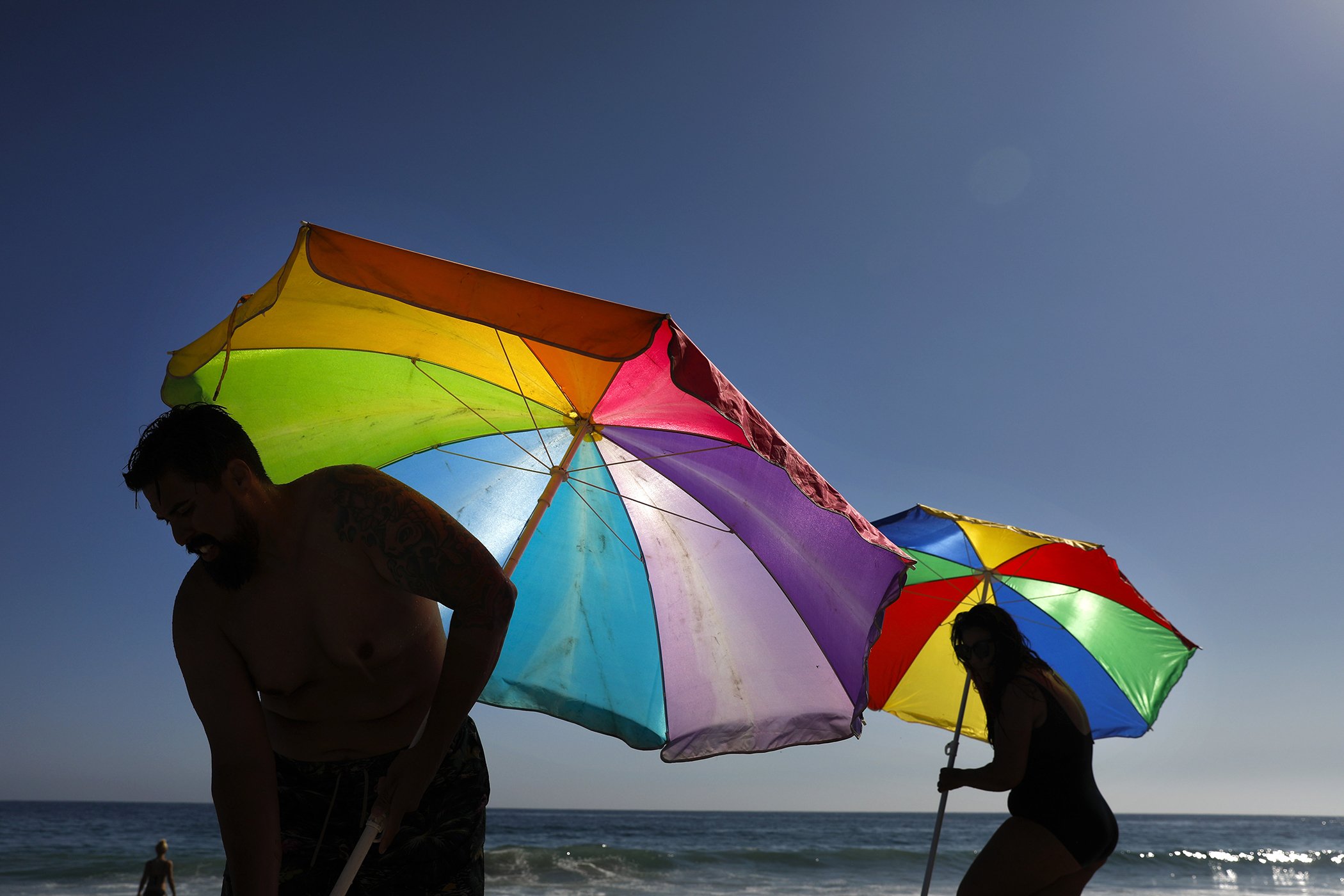 Mario Ramos, left, and wife, Tally, are silhouetted as they move their umbrellas on the beach, Aug. 7, 2018, in Laguna Beach, Calif. Weather forecasters are warning of excessive heat this week in parts of Nevada, Arizona and California.
Mario Ramos, left, and wife, Tally, are silhouetted as they move their umbrellas on the beach, Aug. 7, 2018, in Laguna Beach, Calif. Weather forecasters are warning of excessive heat this week in parts of Nevada, Arizona and California.
The past decade was the hottest in recorded history, and this decade is on pace to break that record. Heat waves and higher temperatures in general are an extreme public health threat that predominantly affect the world’s poorest communities.
At 1.5 degrees of warming, there would be up to 19 extra days of extreme heat per year on average, with warm spells lasting roughly 17 days longer than usual. Two degrees of warming would bring around 29 additional days of extreme heat, with warm spells enduring for 35 extra days.
At 1.5 degrees, 14% of the global population would be exposed to at least one severe heat wave every five years. That rate jumps to 37% if the planet reaches 2 degrees of warming.
Europe, for instance, would have a 47% chance of experiencing unprecedented summer heat each year at 1.5 degrees, and a 59% chance at 2 degrees.
More Rain — but Not Everywhere
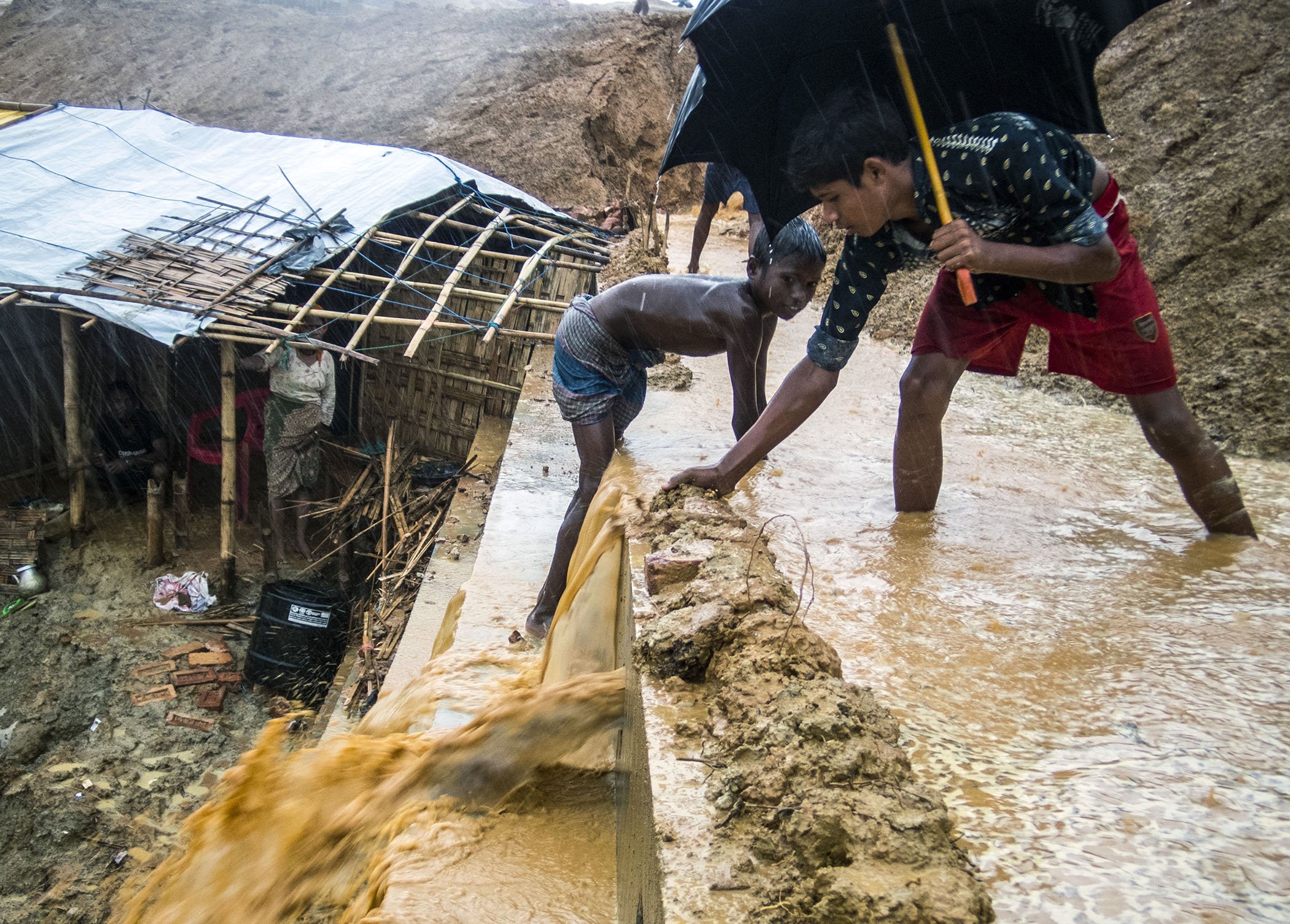 Rohingya refugee children struggle with the mud collecting on a retaining wall during the first days of monsoon rain in Kutupalong Camp, Cox's Bazar on June 10, 2018. Much of the infrastructure of the camps is eroding as the rain falls and deforestation has left the sandy ground unstable.
Rohingya refugee children struggle with the mud collecting on a retaining wall during the first days of monsoon rain in Kutupalong Camp, Cox's Bazar on June 10, 2018. Much of the infrastructure of the camps is eroding as the rain falls and deforestation has left the sandy ground unstable.
Climate change is altering precipitation patterns, creating both unprecedented downpours and droughts — events with similarly destabilizing effects. Both drought and downpours can upend agriculture, displace people from their homes, and undermine local economies.
Extreme rainfall, however, can unleash waterborne illnesses and cause people to drown, while droughts can fuel dust storms and forest fires.
Under 1.5 degrees of warming, 17% of land will face extreme rainfall and average rainfall will increase by 2%, according to Carbon Brief. An increase of 2 degrees would expose 36% of land to extreme rainfall and cause average rainfall to rise 4%.
That means that half a degree of warming would double the effects.
This seemingly minor difference would also double the length of the average drought. The World Health Organization warns that drought is expected to displace 700 million people by 2030 alone.
Animals and Plants With No Place to Go

Species across the animal and plant kingdoms are being wiped out as temperatures rise and their habitats get destroyed by human activity. The hotter it gets over the next century, the more dire their circumstances will become.
In fact, habitat loss for all species would double or triple if temperature increases went from 1.5 degrees to 2 degrees. If the planet warms beyond 4.5 degrees, then the majority of the planet would no longer be able to host wildlife.
Turbocharged Storms
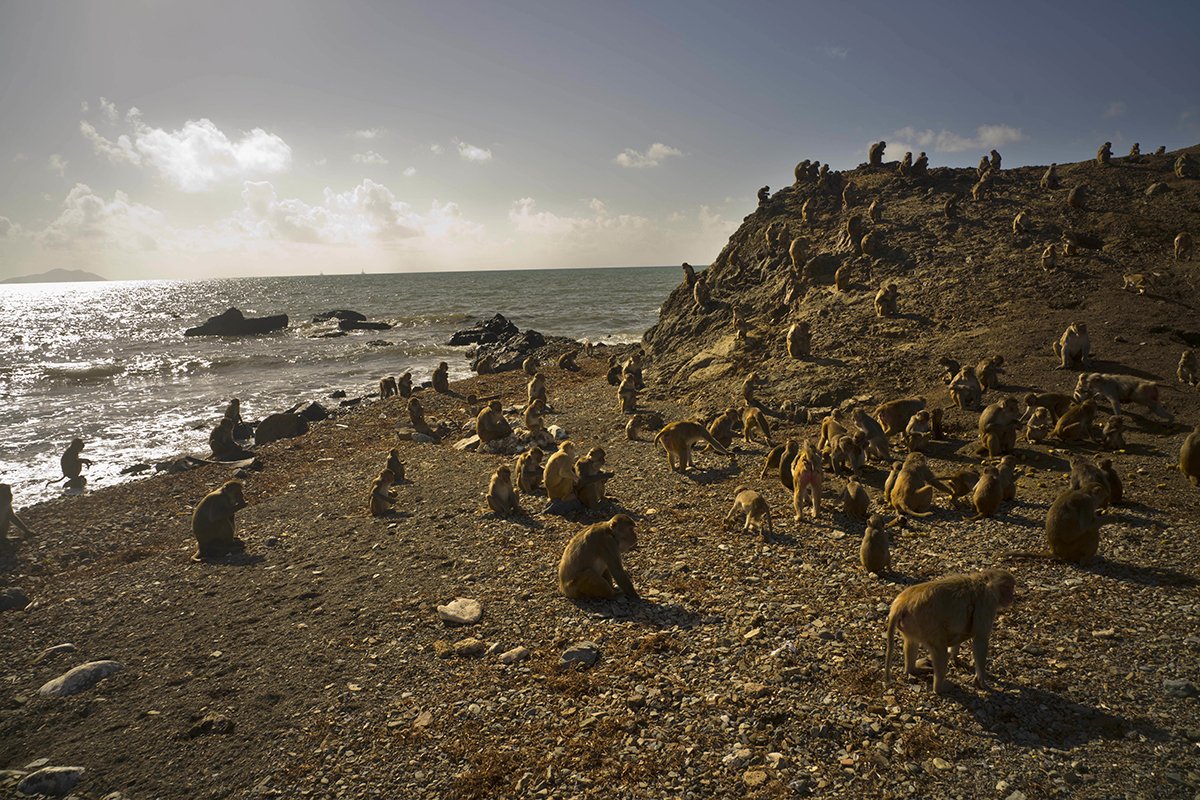 Monkeys move about on Cayo Santiago, known as Monkey Island, in Puerto Rico on Oct. 4, 2017. One of the first places Hurricane Maria hit in the U.S. territory Sept. 20 was Monkey Island, a 40-acre outcropping off the east coast that is one of the world’s most important sites for research into how primates think, socialize and evolve.
Monkeys move about on Cayo Santiago, known as Monkey Island, in Puerto Rico on Oct. 4, 2017. One of the first places Hurricane Maria hit in the U.S. territory Sept. 20 was Monkey Island, a 40-acre outcropping off the east coast that is one of the world’s most important sites for research into how primates think, socialize and evolve.
Tropical storms have been getting stronger, faster, and more destructive due to warming ocean temperatures, rising sea levels, and other planetary shifts. Under all warming scenarios, category 4 and 5 tropical storms would become more common on an annual basis.
Harder to Grow Favorite Crops
 Poorer members of the community work on a neighbour’s farm in exchange for food. However, the availability of this traditional practice has been curtailed in recent years as even the wealthier households cannot protect against climate change.
Poorer members of the community work on a neighbour’s farm in exchange for food. However, the availability of this traditional practice has been curtailed in recent years as even the wealthier households cannot protect against climate change.
Climate change is already making it hard to grow a number of specialty crops — coffee, grapes, and chocolate, to name a few. But many of the staple crops that form the basis of nutrition are also being threatened by warmer temperatures and that lead to rising hunger worldwide.
By the year 2100, the average crop yield of both wheat and maize will decline regardless of how much temperatures rise. At the same time, both rice and soy production will increase, which would inevitably lead to shifts in how people eat.
Proliferating Health Threats
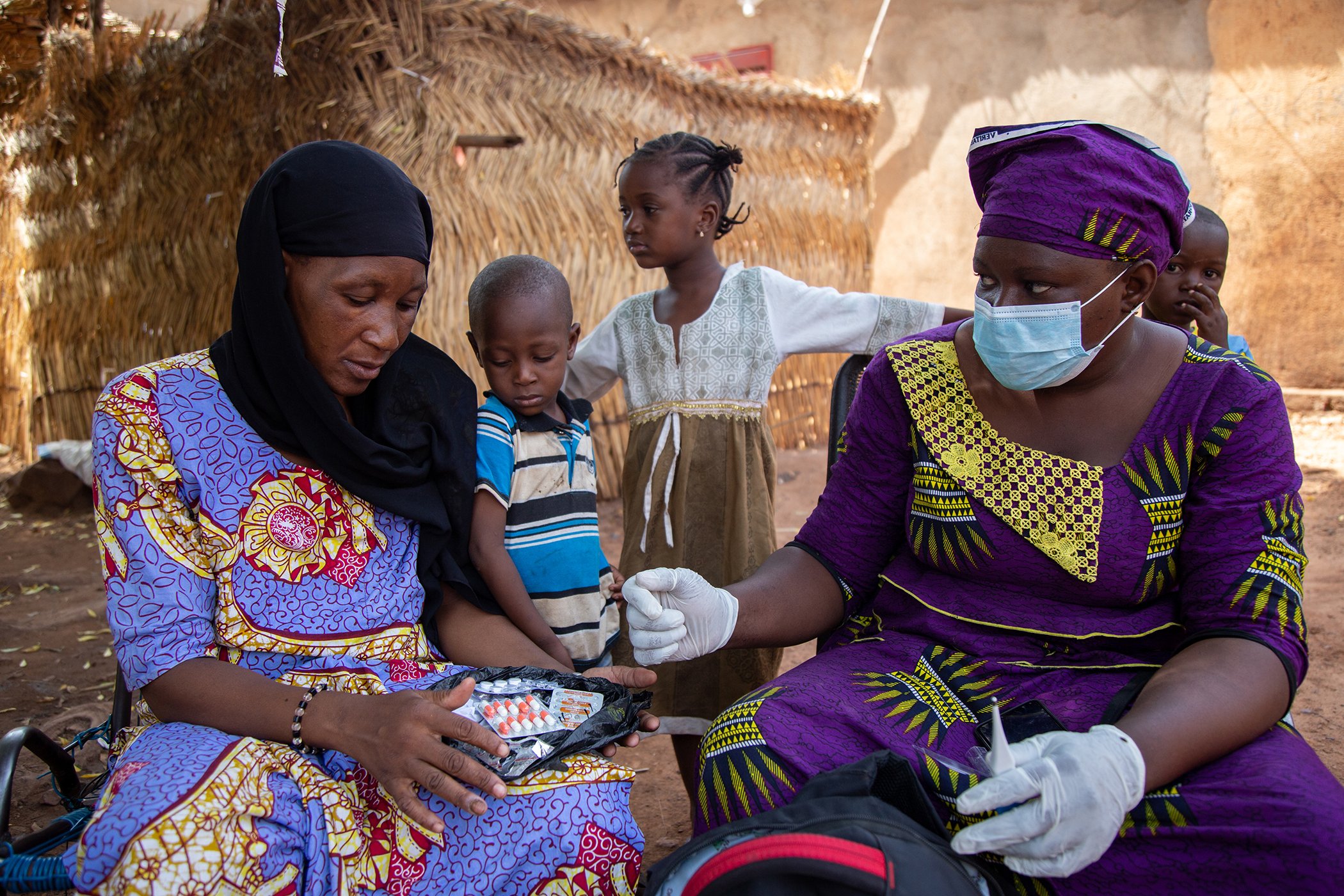 Community health worker Adele Coulibaly follows up with Mariame Coulibaly who was recently treated for an illness, during rounds to speak with families in her area of Yirimadio about malaria prevention on July 2, 2020 in Bamako, Mali.
Community health worker Adele Coulibaly follows up with Mariame Coulibaly who was recently treated for an illness, during rounds to speak with families in her area of Yirimadio about malaria prevention on July 2, 2020 in Bamako, Mali.
Community health worker Adele Coulibaly follows up with Mariame Coulibaly who was recently treated for an illness, during rounds to speak with families in her area of Yirimadio about malaria prevention on July 2, 2020 in Bamako, Mali.
Climate change is an urgent public health threat that will kill far more people than the COVID-19 pandemic through heat waves, waterborne illnesses, air pollution, and much more. Mosquitos will also become a greater menace. As the world warms, mosquito ranges will expand, and many more people will become afflicted with malaria as a result.
If temperature rise stays at or under 1.5 degrees, then mosquito ranges will expand by up to 20% in arid conditions and 6% in humid conditions. A mere half a degree more would expand their ranges by up to 30% and 10%, respectively.
How Can We Take Action?
It’s still possible to keep temperatures from rising beyond 1.5 degrees Celsius, and there’s no mystery to how this can be achieved. Countries have to phase out fossil fuels and extractive industries, let the natural world recover, and fully fund a global just transition. Global Citizens around the world can help accelerate this transformation by pressuring political leaders to prioritize climate action, joining climate organizations, and minimizing your personal environmental impact.
You can join the Global Citizen Live campaign to defeat poverty and defend the planet by taking action here, and become part of a movement powered by citizens around the world who are taking action together with governments, corporations, and philanthropists to make change.
